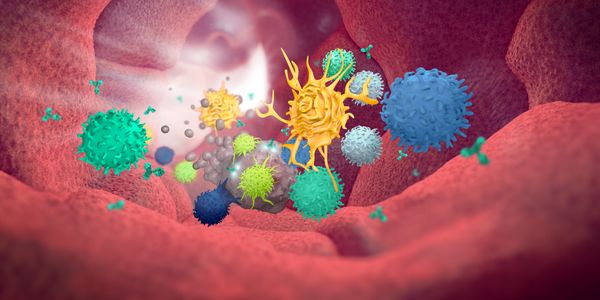Tumor development
Tumor development, or tumorigenesis, broadly describes the process by which normal cells gain malignant properties. Tumor development includes growth functions like cellular differentiation, proliferation, and metastasis.
-
Ensuring that clinical tests are not affected by tumor heterogeneity requires a sampling methodology that captures the genomic, proteomic, and cellular diversity of entire solid tumors. Howe...
Three-dimensional (3D) cell culture spheroids and aggregates are preferred over monolayer cell culture due to their architectural and functional similarity to solid tumors. To study expressi...
NOV 12, 2020 | 8:00 AM
Date: November 12, 2020 Time: 8:00am (PST), 11:00am (EST) Vaccine development, disease diagnosis and early medical intervention are all supported by Raman spectroscopy. This tool provides ri...
The development of many different chromogens for light microscopy gives us the opportunity to explore different usage of multiplex immunohistochemistry (IHC) for clinical diagnostic purposes...
NOV 05, 2020 | 7:00 AM
DATE: Date needed, 2020 TIME: Time needed Exosomes are a population of naturally occurring mobile, membrane-limited, 30 – 100 nm in diameter, extracellular vesicles containing a large...
Speaker:
Jorge Escobar
, Aurélie Tacheny
Dr. Bacher will be discussing the history and evolution of MSI, the differences between popular testing methods, and what the future holds for this powerful biomarker....
NOV 04, 2020 | 11:00 AM
DATE: November 4th, 2020 TIME: 11:00am PST As cell therapies become more complex, the need for robust analytical tools to characterize such products as they enter the clinic has increased in...
OCT 28, 2020 | 7:00 AM
Date: October 28, 2020 Time: 7:00am (PDT), 10:00am (EDT) Although chemotherapy remains the mainstay of systemic therapy, a large number of cancer patients fail to respond to it. About half o...
To identify genetic variants in archival human samples, researchers need a powerful NGS platform that can accommodate input DNA and RNA that is often low quality and/or low quantity. This ch...
Speaker:
Craig Mackinnon, MD, PhD
Presented at: OncomineWorld 2022: A Virtual NGS Education Meeting
The treatment of cancer has remarkably improved because of increased knowledge of the molecular abnormalities that drive human cancer growth. This has led to the development of ever more eff...
The treatment of cancer has remarkably improved because of increased knowledge of the molecular abnormalities that drive human cancer growth. This has led to the development of ever more eff...
OCT 20, 2020 | 9:00 AM
DATE: October 20th, 2020 TIME: 08:00am PT, 11:00am ET Tumor-associated macrophages (TAMs) are key cells in the tumor microenvironment (TME) with diverse immune functions that have a major in...
...
Speaker:
Arjun Khanna
, David Chi Leung Lam, MD, PhD
, Chein-Feng Li, MD
, Darren Wan Teck Lim























